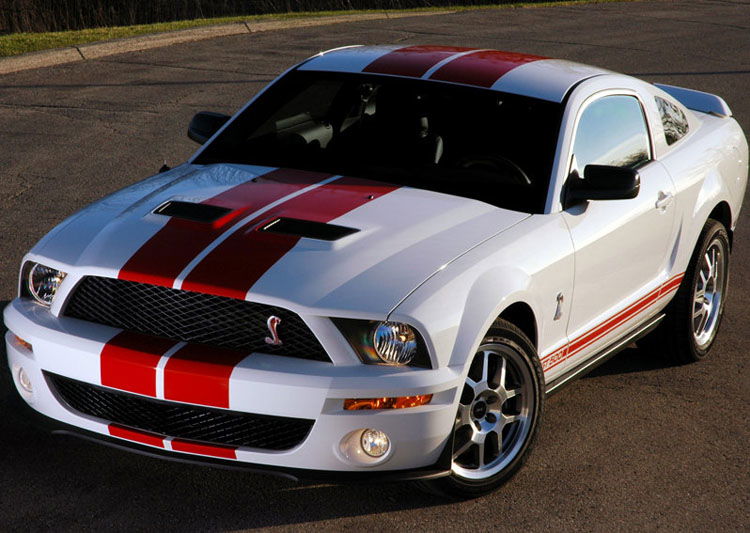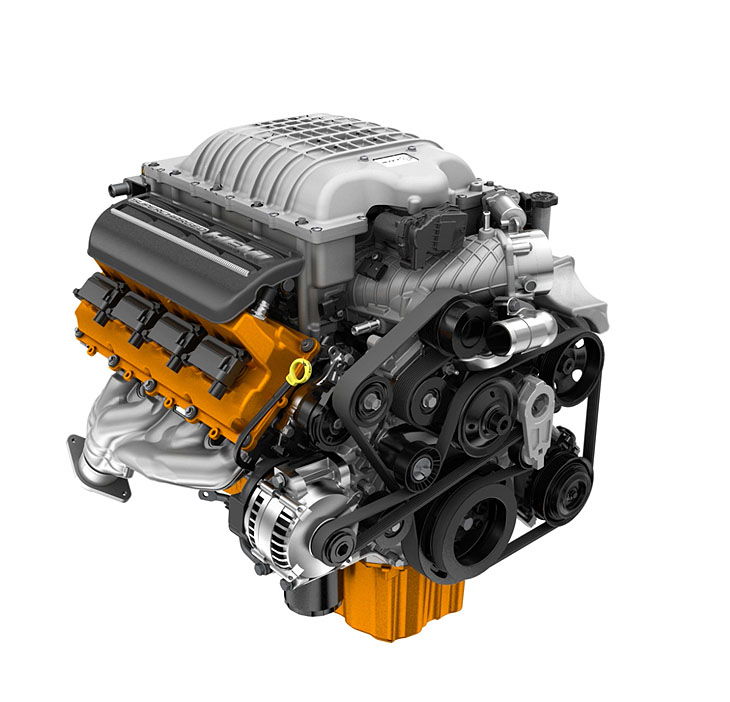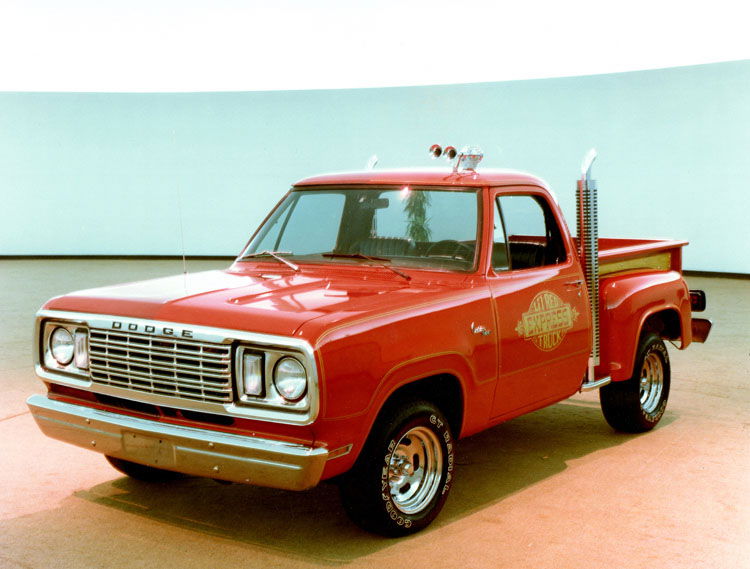4 Ways Top Gear Misled The World On American Performance Cars

It wasn’t until the eighth or ninth series that I started watching what’s now known as New Old Top Gear. Back in those days, getting full episodes in America wasn’t necessarily easy, but as a devoted petrolhead I’ll just say I found a way. At that point I’d already had a few cheap car experiences of my own, so watching a show with three blokes cocking about with cars in a similar manner as me (albeit with a MUCH larger budget) was sheer pleasure.
As a budding auto journalist with a strong automotive background, I also learned that the boys tended to stretch the truth from time to time. Hey, that’s okay; it’s a television show designed to entertain. But there were also moments - primarily during road tests - where that hyperbole was stretched to the limit in a way that might not be so obvious to casual viewers. Admittedly I have some bias to U.S. manufacturers, just as Clarkson, May and Hammond have bias to British brands.
It’s that bias which compels me to help clear the air on a few moments in New Old Top Gear where the trio weren’t entirely forthcoming in regards to some American car reviews. Informed car enthusiasts like you will likely recognise what I’m saying, but for the non-car lovers, here’s a bit more insight into a few moments that, while entertaining for the presenters, created all kinds of frustration for American auto enthusiasts.
1. The Shelby GT500 is 'way down on official power'

Back in 2007, Ford unveiled the Shelby GT500 - named after the legendary 1967 Shelby GT500. In this instance, the GT500 also referred to the output of the new Mustang’s supercharged V8, which was rated at 500bhp. Hammond was putting the car through its paces, but to address the “neat” 500bhp claim, out came the rolling road (aka dyno) to get a measurement of the GT500’s horsepower. And that’s where it goes wrong.
Everyone well-versed in the automotive world knows that manufacturers rate engine horsepower at the crankshaft, not at the wheels. By the time horsepower gets to the wheels there is some power loss; that’s true for everything from the 660bhp Ferrari 488 to the 120bhp Ford Fiesta. So, when Hammond proclaimed that the GT500 actually made 447bhp, he was referring to wheel horsepower versus crankshaft horsepower. Technically he was correct, but still, the takeaway was that the GT500 was ‘down’ on power. When you do the maths to account for power loss, you actually come back at slightly more than 500 horsepower at the crankshaft.
Come on Hammond, you’re supposed to be the secret American of the bunch, yet you try to trick the world?
2. The Tesla Roadster 'will run out of power after 55 miles'

Here’s an instance where stretching the truth for entertainment purposes actually led to a formal lawsuit. Most people recall Clarkson’s review of the Tesla Roadster, notably that both test cars broke down and that they would run out of power after 55 miles, as opposed to Tesla’s claimed range of over 200 miles. Ultimately the lawsuit was dismissed in Top Gear’s favour because their conclusions were technically correct; under continual racing conditions the Tesla would run out of power much more quickly. Obviously.
However, since nobody would be running a Tesla under continual racing conditions, why make such a big deal out of the shortened range? If you run a 2013 Porsche 911 turbo under continual racing conditions, it certainly won’t achieve anywhere near its combined rating of 19 US mpg. And yet, in the many Porsche reviews through the years, that subject never came up.
Obviously the takeaway is that Top Gear doesn’t like electric cars, and hey, there’s nothing wrong with that. Personally, I’m not a fan, either; they’re too heavy, too quiet, they take far too long to recharge, and the reliable range varies far too much on how you drive. The technology is improving, but it just doesn’t make sense yet as a performance car.
Had Clarkson simply said these things, then no harm no foul. Instead, the crew resorted to some very questionable editing, and if you believe Tesla, flat-out lies to paint a very bad picture of a car that is really quite brilliant. Is it perfect? Certainly not, but neither is it the disaster that Top Gear tried to make it out to be. Even for an entertaining motoring show, they crossed the line in their attempt to be witty.
3. The Corvette’s 'antiquated' suspension

Here’s another review from the Hamster that, while being technically accurate, was still misleading enough to become the root of many epic bench racing wars around the globe. All the way back in the final episode of Series 4, Hammond remarked in a rather unflattering way that the Corvette’s suspension used leaf springs. Ah yes, we silly Americans just can’t build anything modern and sophisticated (more on that in a moment) because we are perfectly happy driving tractors with solid axles and big, floppy leaf springs to town for cheeseburgers. Yes, the Corvette does use leaf springs, but it’s not quite that simple.
In fact, the current generation Corvette - which Hammond actually praised to the nth degree just a few months ago for its suspension made of carbonfibre - also uses leaf springs. Or rather, it uses a single spring in back and front, made of composite materials and mounted transversely. Without getting too technical, this layout still provides independent suspension travel at all four wheels, while eliminating the need for sway bars, individual coil springs and shock towers. The design is more compact, allowing for more room in the engine bay and interior while also saving quite a bit of weight over a standard independent suspension arrangement.
There are drawbacks - ride quality isn’t quite as soft as found on similar sports cars, but it’s an outstanding design for performance. It’s certainly far removed from the old-fashioned design Hammond made it out to be.
4. Low-tech, unsophisticated engines

There really isn’t a specific reference or review to call out on this point. Pick any series and at some point someone will throw in a quip about American engines being big, bulky and basic. This of course is in contrast to modern, clever, European engines with double overhead camshafts and four valves per cylinder. But there’s a very big problem with that, because modern overhead cam designs are actually over 100 years old. Peugeot built the first double overhead cam car in 1912, and it was in mainstream use by the 1930s. Meanwhile, General Motors currently has the LS family of pushrod, 16-valve V8 engines that have become favourites for swapping into cars that, by common definition, are running more advanced, sophisticated engines. I wonder why people make the swap then?
I struggle to understand why 16-valve, cam-in-block V8 engines built from aluminium, steel and titanium, operated through advanced computer control, using technologies like direct injection and variable valve timing, spinning to 7000rpm and developing 500 naturally-aspirated horsepower are somehow considered low-tech and unsophisticated next to DOHC designs. It’s a different approach to horsepower, not better or worse. There’s nothing low-tech or unsophisticated about a 707bhp supercharged V8 that not only has insane power, but uses sodium-filled valves, diamonds (yes diamonds) to various degrees throughout the engine, and extensive computer control to not only be a 200mph sedan, but also be a streetable daily driver that returns over 20mpg on the highway. And oh yeah, it also has a five-year/100,000-mile warranty. For a 707bhp supercar-killing sedan. Low tech and unsophisticated? Yeah, right.

Comments